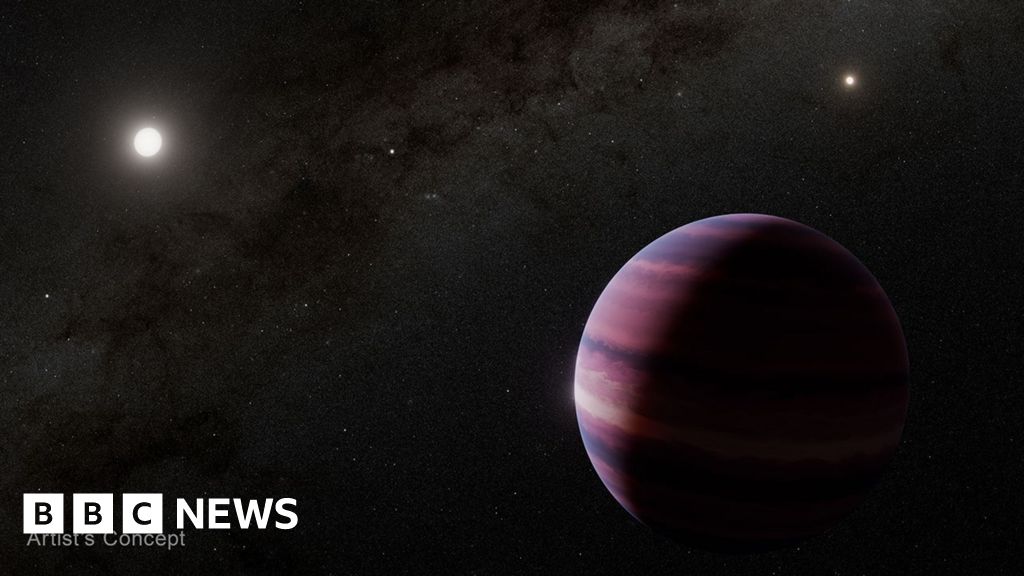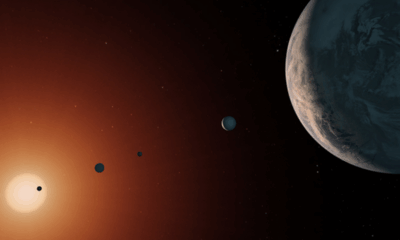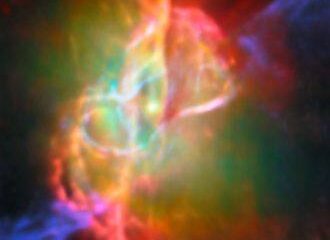Science
Scientists Discover New Evidence of Giant Planet Near Earth

Strong evidence has emerged for the existence of a giant gas planet in the Alpha Centauri star system, located approximately four-and-a-half light years from Earth. This discovery, made using the powerful James Webb Space Telescope, could have significant implications for the search for habitable moons surrounding the planet.
Exciting Findings from Alpha Centauri
The potential planet was initially detected in August 2024, but subsequent observations yielded no signs of its existence. Now, astronomers are set to revisit their findings to confirm whether this intriguing object is indeed a planet. The star system, Alpha Centauri, is notable for its similarity to our Sun, raising hopes that it could host worlds capable of supporting life.
Dr. Carly Howett, an associate professor of space instrumentation at the University of Oxford, expressed enthusiasm about the discovery. “Four light years is a long way, but in galaxy terms, it’s very close—it’s in our neighbourhood,” she stated. The star around which the potential planet orbits shares important characteristics with our Sun, including temperature and brightness, which are crucial factors for habitable environments.
This giant planet, if confirmed, would resemble the gas giants in our own solar system, such as Jupiter and Saturn. While the planet itself may not be suitable for life due to its thick gaseous atmosphere, it is believed to potentially host moons that could harbor life. Similar icy moons in our solar system, such as those orbiting Jupiter, are subjects of investigation through missions including Europa Clipper and Juice.
Challenges in Observations
Detecting planets in such bright star systems poses significant challenges. Observations made by the James Webb Space Telescope are often complicated by the intense light emitted from nearby stars, which can obscure celestial objects. Charles Beichman from NASA’s Jet Propulsion Laboratory, co-first author of the new findings, noted, “These are incredibly challenging observations to make, even with the world’s most powerful space telescope.”
Beichman explained that the brightness of nearby stars can mask planets, which may be located either behind the star or too close to it for detection. “You need an element of luck,” he added, highlighting the unpredictable nature of astronomical observations.
As astronomers prepare to conduct further investigations, they plan to utilize the upcoming Grace Roman Space Telescope, set to commence operations in 2027. Future observations with the James Webb Space Telescope will also employ spectral imaging techniques to analyze the planet’s composition and the potential habitability of its moons.
As researchers continue their quest to gather more evidence, the prospect of discovering life-sustaining environments in our cosmic neighborhood remains tantalizingly close. The ongoing exploration of Alpha Centauri exemplifies the enduring human fascination with the universe and the possibilities that lie beyond our home planet.
-

 Entertainment1 month ago
Entertainment1 month agoAnn Ming Reflects on ITV’s ‘I Fought the Law’ Drama
-

 Entertainment2 months ago
Entertainment2 months agoKate Garraway Sells £2 Million Home Amid Financial Struggles
-

 Health1 month ago
Health1 month agoKatie Price Faces New Health Concerns After Cancer Symptoms Resurface
-

 Entertainment2 months ago
Entertainment2 months agoKim Cattrall Posts Cryptic Message After HBO’s Sequel Cancellation
-

 Entertainment1 month ago
Entertainment1 month agoWhere is Tinder Swindler Simon Leviev? Latest Updates Revealed
-

 Entertainment2 months ago
Entertainment2 months agoMasterChef Faces Turmoil as Tom Kerridge Withdraws from Hosting Role
-

 Entertainment3 months ago
Entertainment3 months agoSpeculation Surrounds Home and Away as Cast Departures Mount
-

 World1 month ago
World1 month agoCole Palmer’s Mysterious Message to Kobbie Mainoo Sparks Speculation
-

 Entertainment1 month ago
Entertainment1 month agoITV’s I Fought the Law: Unraveling the True Story Behind the Drama
-

 Entertainment1 month ago
Entertainment1 month agoCoronation Street’s Carl Webster Faces Trouble with New Affairs
-

 Entertainment3 weeks ago
Entertainment3 weeks agoCaz Crowned Winner of The Great British Sewing Bee, Overjoyed by Triumph
-

 Entertainment2 months ago
Entertainment2 months agoAldi Launches Cozy Autumn Fragrance Range Ahead of Halloween

















